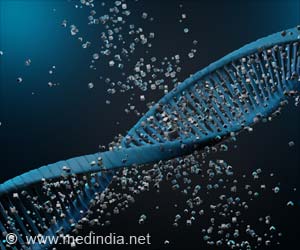A particular gene fusion has a worsening effect on cancer cells.Preventing cell 'signaling' from this particular fusion may not be an effective way for future cancer treatment

‘Gene fusion FGFR3-TACC3 is associated with bladder and brain cancer. FGFR3 fusion is linked to cancer, and TACC3 fusion causes mistakes in cell division, making cancer worse.’





Their findings have just been published in the paper FGFR3-TACC3 cancer gene fusions cause mitotic defects by removal of endogenous TACC3 from the mitotic spindle in the Royal Society journal Open Biology.Sometimes chromosomes can break and get reattached to a different one in an unusual way which results in a fusion between one gene and another which makes a new gene, called a gene fusion.
The scientists at Warwick Medical School examined the gene fusion FGFR3-TACC3 which is associated with bladder and brain cancers. Previously scientists focused on the first part of the fusion, FGFR3, because this was known to be associated with cancer.
However the team decided to look at the second half TACC3 or transforming acidic coiled-coil protein 3.They found that this part of the fusion causes mistakes in cell division, making the cancer worse.
The team was led by Professor Stephen Royle who said: "Cancer cells often have gene fusions which happen because the DNA in cancer cells is really messed up such as the well-known Philadelphia chromosome in chronic myelogenous leukaemia.
Advertisement
"Doing work like this is important as it helps us to understand all the possible ways to tackle a specific cancer and to find any problems with potential treatments"
TACC3 is important for cell division as it helps chromosomes to separate to the two 'daughter' cells when a cell divides. Chromosomes are shared out by the mitotic spindle which is built inside the cell made up of tiny threads called microtubules.
TACC3 stabilises these microtubules and adds strength to the mitotic spindle. Previously scientists suggested that the gene fusion FGFR3-TACC3 might bind to the mitotic spindle but not be able to work properly. Professor Royle's team decided to examine this in further depth.
However the team found that FGFR3-TACC3 is not actually bound to the mitotic spindle. Instead it is at the cell's membrane and in small vesicles in the cell. They found that the TACC3 section of the fusion gene FGFR3-TACC3 was acting like a vacuum cleaner 'hoovering' the normal TACC3 off the spindle, preventing normal cell division.
The team used a process of elimination to further their research. First they made the cancer cells express some normal TACC3 and this repaired the faulty division. They then removed the FGFR3-TACC3 fusion and that also returned the cells back to normal.
Finally they made a fake FGFR3-TACC3 with a dummy part in place of FGFR3 and they found that this also caused problems by hoovering up normal TACC3 and causing cell division.
Professor Royle said: "An ideal cancer treatment might be to block TACC3 interactions as well as stopping signalling. However this is very difficult to do and is far in the future
"Drug companies can develop chemicals which stop cell signalling from fusions and these could work as anti-cancer agents.
"In the case of FGFR3-TACC3 even if you stop the signalling there will still be cell division problems in the cancer cells. We hope our study will provide a basis for further research into how these gene fusions are linked to bladder and brain cancer."
Source-Eurekalert














